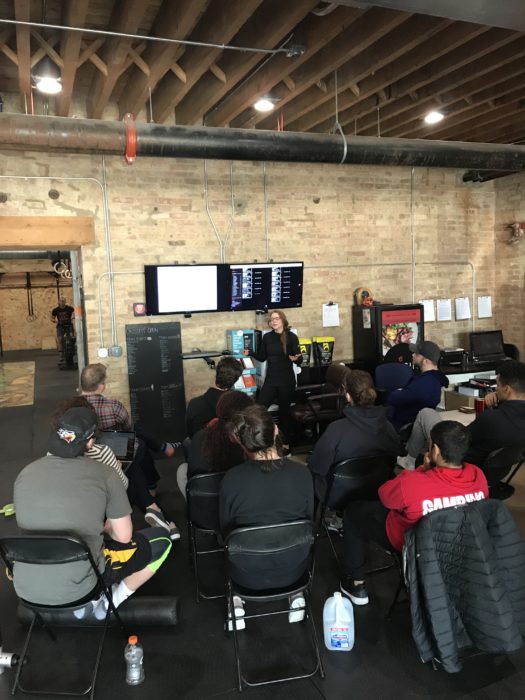Bluprint Nutrition
Top 10 Takeaways
On Saturday, February 9th Bluprint hosted a seminar for athletes to learn about the ins-and-outs of nutrition. I had the privilege of sitting in on this and wanted to put together a summary for those who couldn’t attend. Check out my Top 10 Takeaways from the seminar!
Food Is Fuel
Your body requires food in appropriate amounts to fuel and promote performance in the gym. The more you can do, the better your body will eventually look. BUT you need to understand there is no sprint to get there. The sprint typically involves short-term results with potential long-term health and hormonal consequences
Energy Balance
Calories In > Calories Out (Weight Gain)
Calories In < Calories Out (Weight Loss)
Calories In = Calories Out (Weight Maintained)

Calorie Deficit Done Right
The calorie deficit is created by having more energy to put towards workouts rather than by eating less and dragging yourself through workouts.
More Food (less nutrient deficiencies, More Metabolism, ability to provide more energy to fitness) + More Fitness (more energy expenditure). Now we have a calorie deficit to be proud of.
Start Small
IF you are new to the block – start small, master the basics, build habits…THEN decide if you want/need to progress based on your goals.
Know The Basics
8-12 Cups Water = 100 ounces of H2O Per Day
8-12 Servings of Veggies/Fruit per day
Protein with each meal
Building Balanced Meals with a basic understanding of macros (Carbs/Fats/Proteins)
Basic understanding of Portion Sizes and Measuring
Eating out 3 or less times per week
Drinking 3 or less bevies per week
Biggest Pros of Macro Tracking
Changes mentality from weight loss to fat loss
Protects and Promotes Healthy Metabolism
Biggest Cons of Macro Tracking
Can be Overwhelming to a Beginner
Requires Effort and Motivation
The Secret To Logging Your Food
Integrity – This really only works if you can be honest with your log and ultimately honest with yourself.
Calories On The Weekend Still Count
It’s common that we eat structured during the week and throw it out the door on the weekend. To get a REAL picture of our average caloric intake we must look at the week as a whole. Example: If I eat 2000 calories Monday-Friday and 3000 calories on Sat & Sun, my average caloric intake isn’t 2000, it’s 2285!
Stick With The Plan
The only way to assess if a macro tracking program is working for you is to stick with it for a certain amount of time, assess how your performance & body composition changed, and adjust as needed.
Coach Byron





